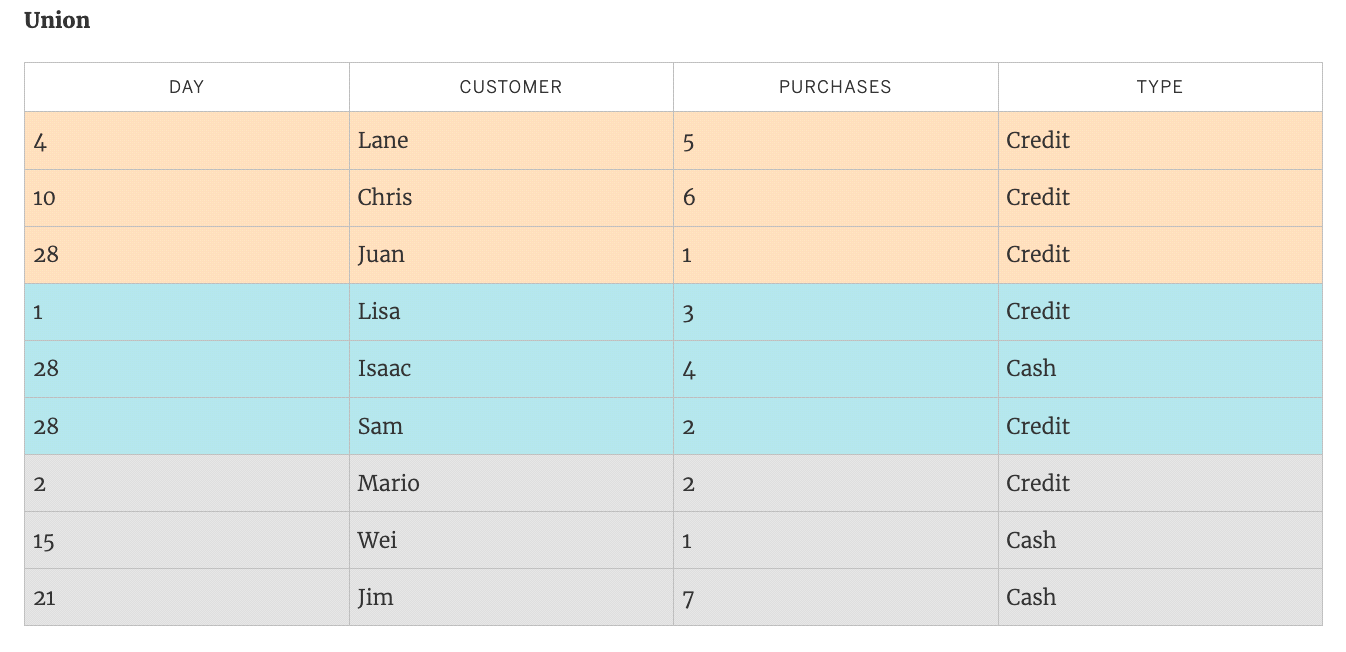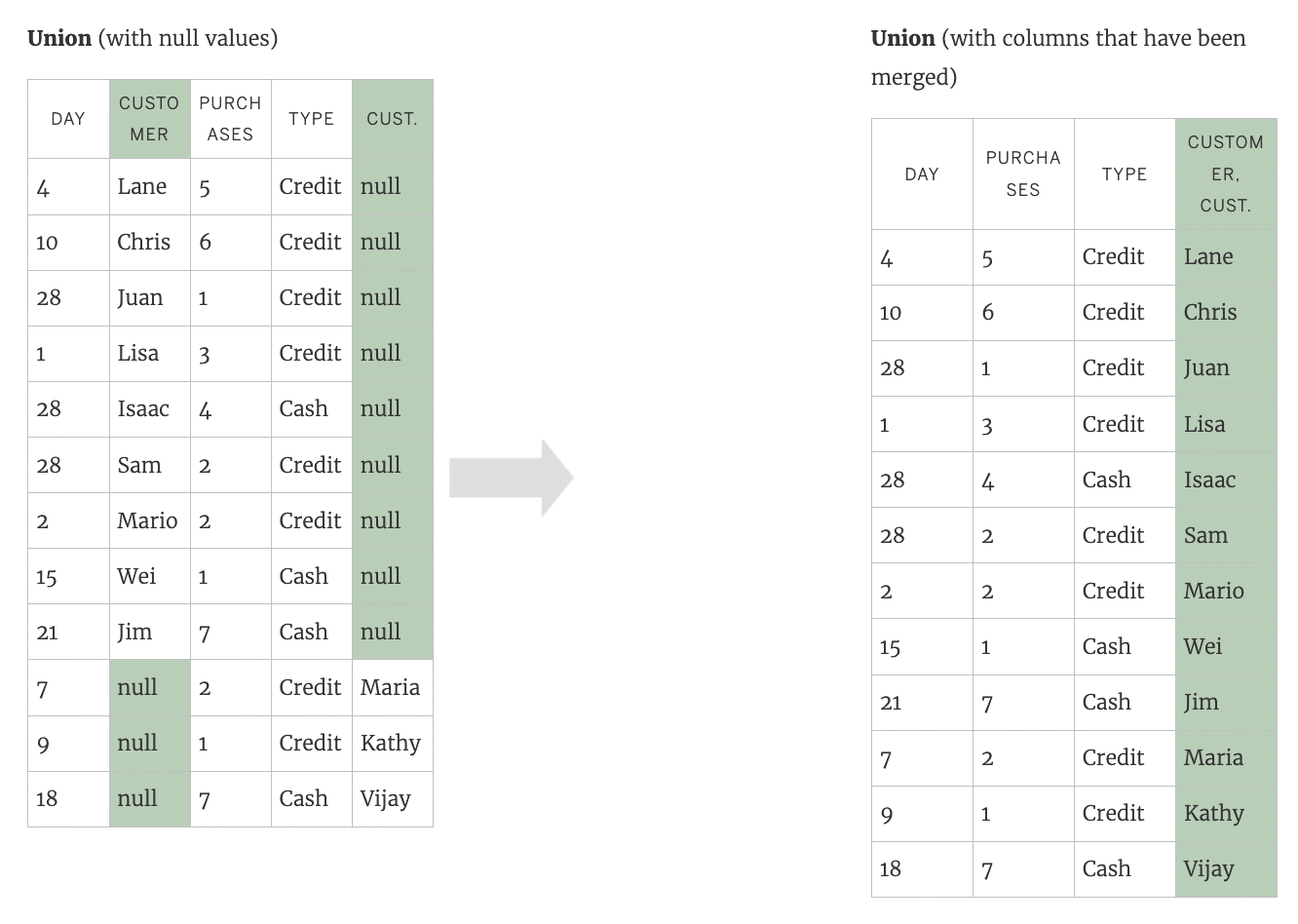Tableau Exam TDS-C01 Topic 6 Question 27 Discussion
Topic #: 6
How does Tableau know at which level to aggregate values?
By default, both field names are present in the Union, but contain several null values!
When field names in the union do not match, fields in the union contain null values.You can merge the non-matching fields into a single field using the merge option to remove the null values.When you use the merge option, the original fields are replaced by a new field that displays thefirstnon-null value for each row in the non-matching fields.
You can also create your own calculation or, if possible, modify the underlying data to combine the non-matching fields.
For example, suppose you have the following customer purchase information stored in three tables, separated by month. The table names are 'May2016,' 'June2016,' and 'July2016.'

A union of these tables creates the following single table that contains all rows from all tables.

Now suppose a fourth table, 'August2016', is added to the underlying data. Instead of the standard 'Customer' field name, it contains an abbreviated version called 'Cust.'


Nana
3 months agoLasandra
2 months agoFrederic
2 months agoLorenza
3 months agoCassi
3 months agoLevi
3 months agoKayleigh
4 months agoFrance
3 months agoTammara
3 months agoJessenia
4 months agoCyril
4 months agoSamira
2 months agoJulian
3 months agoJacqueline
3 months agoShawana
3 months agoCiara
4 months agoAlex
4 months ago